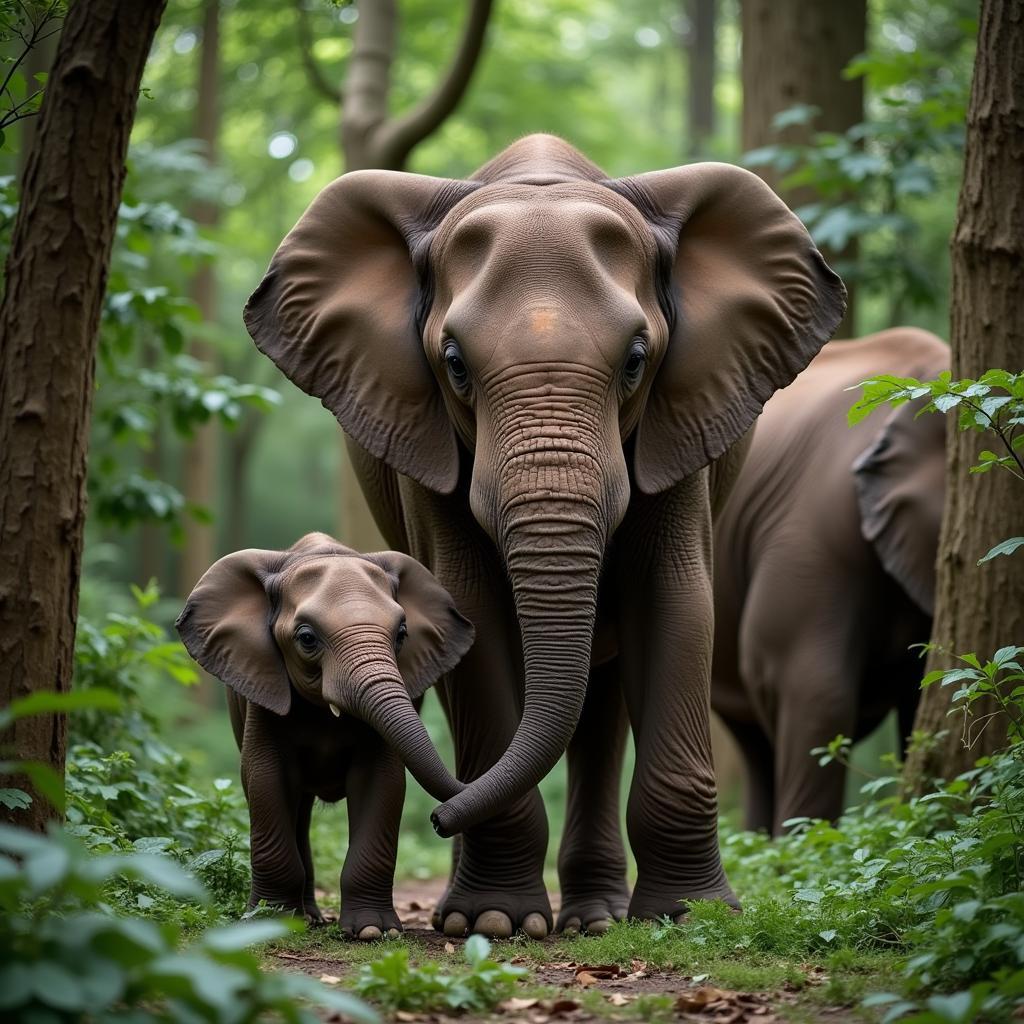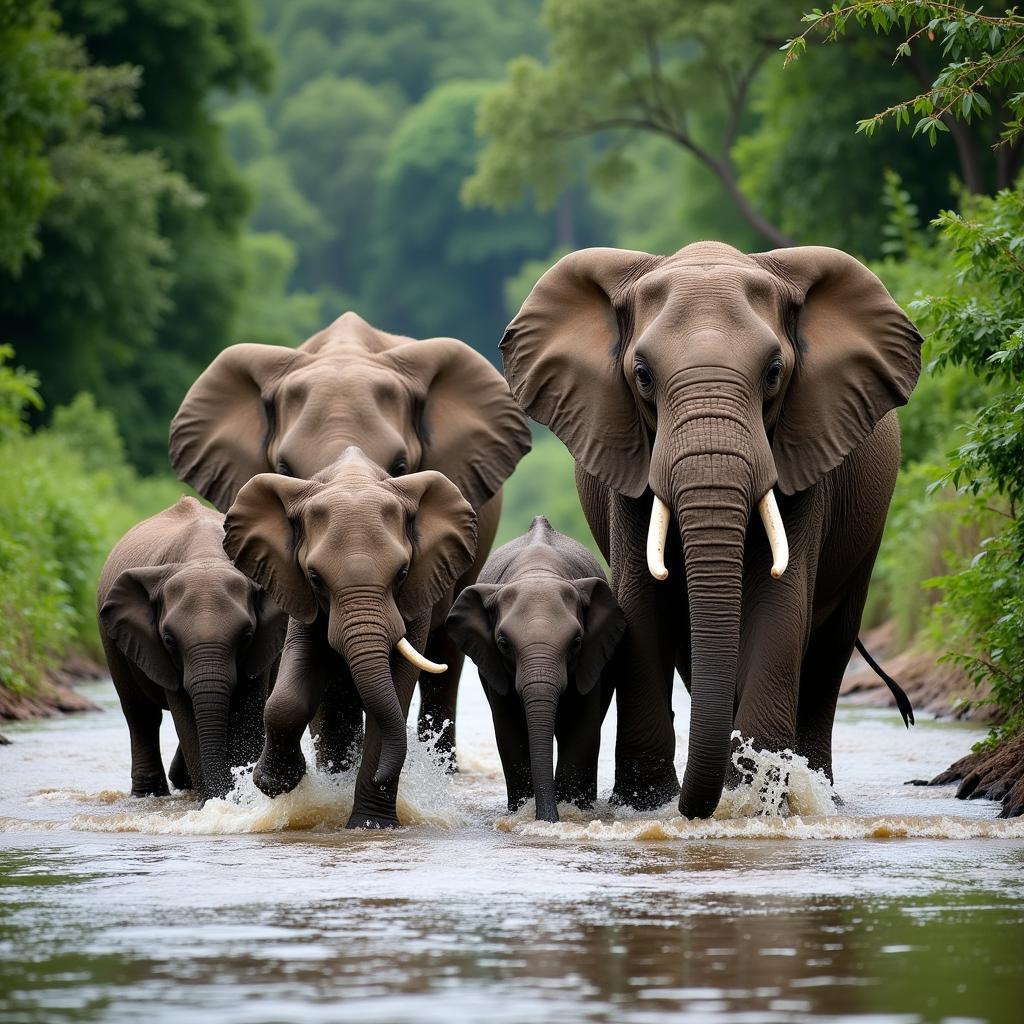Delving Deep into the African Forest Elephant Family
The African Forest Elephant Family unit is a captivating example of strength, intelligence, and deep familial bonds. These majestic creatures, often overshadowed by their savanna counterparts, play a crucial role in maintaining the delicate balance of the African rainforest ecosystem.
 African Forest Elephant Family in the Rainforest
African Forest Elephant Family in the Rainforest
Unveiling the Secrets: Forest Elephants vs. Savanna Elephants
While both forest and savanna elephants are classified as African elephants, there are distinct differences that set them apart. Forest elephants, as their name suggests, are uniquely adapted to the dense rainforests of Central and West Africa. Smaller in size with straighter tusks and rounded ears, they navigate the dense undergrowth with remarkable agility. These differences highlight the fascinating evolution of species based on their environment.
The Matriarch: The Heart of the African Forest Elephant Family
At the heart of every African forest elephant family is the matriarch, the oldest and most experienced female. This wise leader guides her family, typically consisting of her daughters, sisters, and their calves, through the forest, sharing her knowledge of food sources, water holes, and safe havens. The matriarch’s role is pivotal in ensuring the survival of the family unit, passing down generations of knowledge.
The Power of Communication: Sounds That Echo Through the Forest
African forest elephants are incredibly social animals, communicating with each other through a complex system of sounds that can travel for miles through the dense rainforest. From low rumbles to high-pitched trumpets, each sound conveys a specific message, strengthening the bond within the family and serving as a warning system against potential dangers.
 Playful African Forest Elephant Calf in Mud
Playful African Forest Elephant Calf in Mud
A Day in the Life: Forest Giants on the Move
A typical day for an African forest elephant family is a constant search for food. These gentle giants are herbivores, consuming vast quantities of leaves, fruits, and bark. Their search for sustenance takes them on long journeys through the rainforest, playing a crucial role in seed dispersal and shaping the forest structure.
Facing Threats: Protecting the Future of Forest Elephants
Sadly, these incredible creatures face numerous threats, with habitat loss due to deforestation and poaching for their ivory being the most pressing. Conservation efforts are underway to protect these gentle giants and their habitat, emphasizing the importance of sustainable practices and raising awareness about the plight of the African forest elephant.
 African Forest Elephant Family Crossing a River
African Forest Elephant Family Crossing a River
FAQs About African Forest Elephant Families:
1. How many elephants are in a family group?
African forest elephant families are smaller than savanna elephant families, typically consisting of 6-8 individuals, but sometimes reaching up to 20.
2. How long do African forest elephants live?
Similar to their savanna relatives, African forest elephants have a lifespan of around 60-70 years in the wild.
3. How do forest elephants impact the rainforest?
Forest elephants are considered “ecosystem engineers,” playing a vital role in seed dispersal, creating clearings, and shaping the forest structure.
Want to Learn More about the Wonders of Africa?
Discover more fascinating facts about:
Take Action Today!
Join us in protecting these magnificent creatures. To learn more about our conservation efforts or to get involved, contact us at:
Phone: +255768904061
Email: kaka.mag@gmail.com
Address: Mbarali DC Mawindi, Kangaga, Tanzania.
Our dedicated team is available 24/7 to assist you.